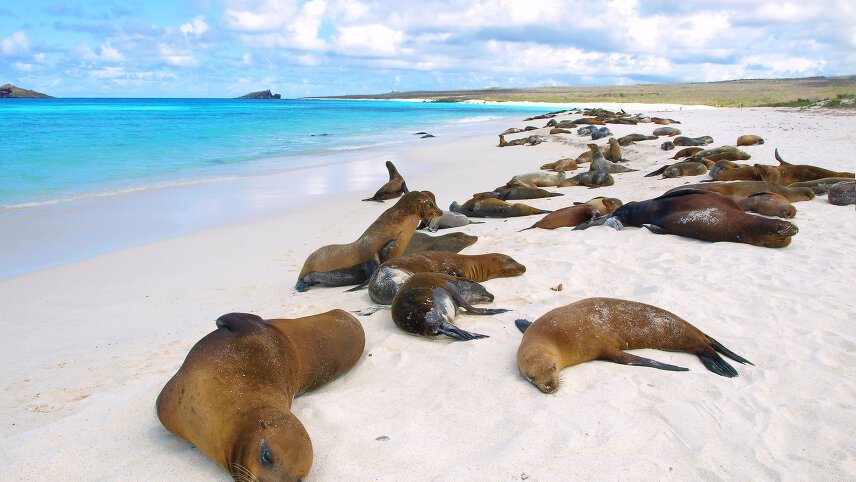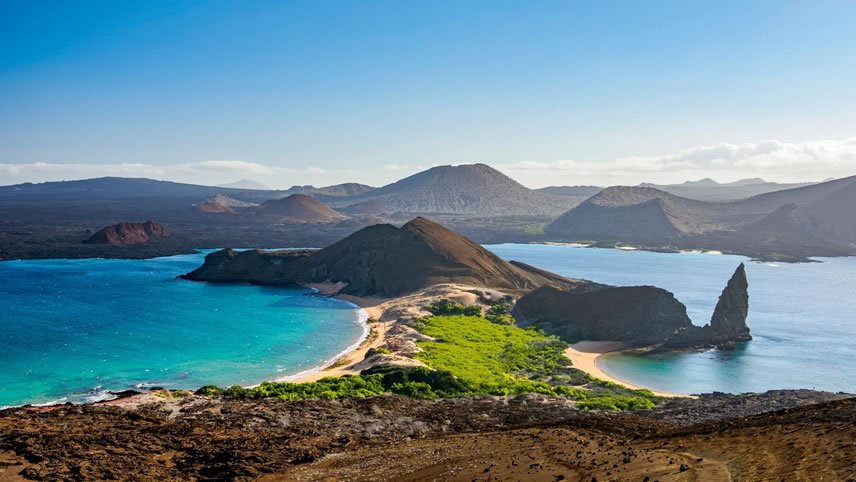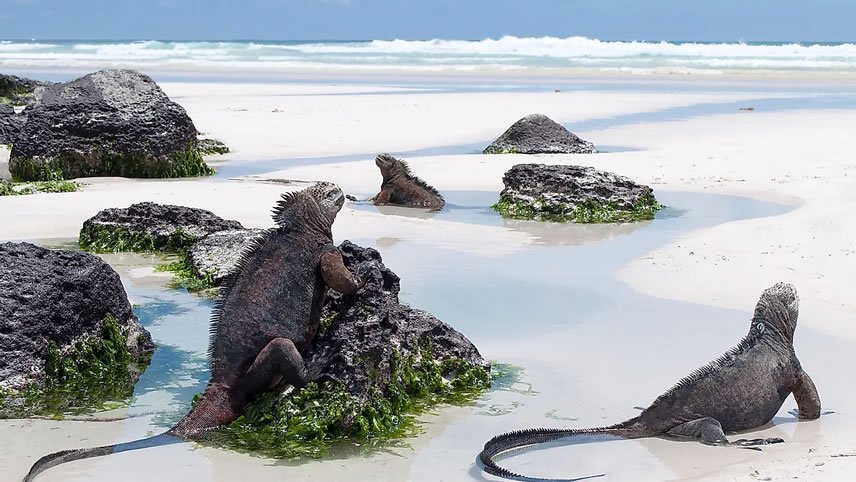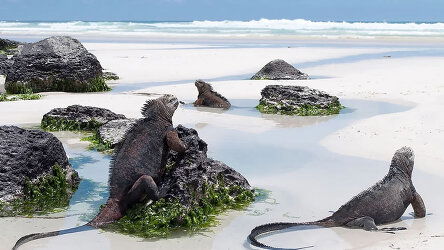Overview
Itinerary
There are free transfers available for all clients today – make sure to check the Joining Instructions for further details. A local guide will welcome you to Quito and explain the schedule for the next few days. Stay: Hotel Wyndham (or similar).
Morning flight to Galapagos You take a transfer to Quito Airport this morning and fly to Baltra Airport in the Galapagos Islands.
Upon arrival, pass through the airport inspection point to make sure no foreign plant or animals are introduced to the island and to pay the national park entrance fee. Your guide will meet you, help you collect your luggage and escort you on a short bus ride to the harbour where a dinghy waits to take you to the yacht.
Afternoon: El Chato Tortoise Reserve and Twin Craters (Santa Cruz) The native scalesia forest of El Chato Tortoise Reserve is the best place to search for Galapagos giant tortoises in their most authentic setting. Despite the interesting breeding centres – where you are guaranteed to find tortoises in their corrals – there is nothing better than to observe them in their wild environment.
Though it can be quite moist and muddy, your visit may turn into an adventurous quest. The Twin Craters are found on either side of the road leading to Puerto Ayora. These impressive formations are not volcanic craters but were formed by magma domes, which hardened on the outside while the lava continued flowing inside, leaving huge and empty magma chambers that eventually collapsed, leaving two large holes.
The craters lie within a lush scalesia cloud forest, a high-altitude plant species endemic to the Galapagos. This area is also home to the carpenter finch, which uses tools to search for food. You may also see the vermilion flycatcher, a small, red-breasted bird. Stay: Solaris (B/L/D).
Morning: North Seymour North Seymour is an uplifted (as opposed to volcanic) island and therefore is generally flat and strewn with boulders. There are good nesting sites here for a large population of magnificent frigate birds. Blue-footed boobies perform their courtship dance in the more open areas and swallow-tailed gulls perch on the cliff edges. Despite the tremendous surf that can pound the outer shore, sea lions haul out onto the beach and can be found bodysurfing.
Afternoon: Mosquera Galapagos sea lions are true beach lovers and Mosquera has coral white-sand beaches that contrast with the blue water to attract numerous sea lions. During a beach walk, you can observe several species of waders and sanderlings. Between the rocks, red clip crabs play hide and seek while you try to get the perfect photo. If you are lucky, you may even encounter yellow-crowned night herons or even a red-footed booby. Stay: Solaris (B/L/D).
Morning: Darwin Bay (Genovesa) Inside the submerged caldera of Genovesa lies Darwin Bay, with a diameter of more than 1mi (1. 5km) and a depth of almost 650ft (200m). The small area will surprise you repeatedly, as you walk along a coral-sand beach, crossing barren lava formations and creeks, passing tidal pools, shrubs and following the cliff tops. With these peaceful surroundings, every species occupies its ecological niche without disturbing others. Whimbrels and wandering tattlers forage actively along the surf, next to resting Galapagos sea lions.
Impressive frigatebirds and red-footed boobies nest in the mangroves, where you can also see vocalists such as the yellow warbler, Darwin's finches and the Galapagos mockingbird. Uniquely, two subpopulations of the same species of large cactus finch differ in their singing. Afternoon: Prince Phillip's Steps (Genovesa) Before landing, you take a dinghy ride along the eastern arm of the caldera with a chance to admire the 80ft (25m) high walls. Sometimes, a Galapagos fur seal is resting or a seabird is nesting on one of the ledges at the base.
You then have to hike and overcome the steep stairs from the landing dock to a bush of palo santo shrubs on top. Red-footed boobies use these scarce nesting places, so they don't have to nest on the rocky ground. Upon arriving at the edge of the rim, the bushes open up and you can enjoy panoramic views, a strong sea breeze and the amazing flying skills of countless seabirds.
Following the exposed rim, you first pass nazca boobies and finally reach the extensive storm petrel nesting places, where, if you're lucky, you can spot the well-camouflaged short-eared owl hunting for food. Stay: Solaris (B/L/D).
Morning: South Plaza Enjoy an unforgettable guided walk on South Plaza, the best place to encounter endemic Galapagos land iguanas – patient and photogenic models. You can also look for some of the unique hybrids between the male marine iguanas and female land iguanas. Arriving at the upper rim, you're 75ft (20m) above the waves splashing against the foot of the cliffs. Clouds of petrels, storm petrels, shearwaters and brown noddies make spectacular flights and sometimes look like they're walking on the waves.
Take your binoculars and don't miss the red-billed tropicbirds with their graceful long tails and spectacular mating fights. These cliffs are also a nesting place for the endemic swallow-tailed gull. Afternoon: Santa Fe In the southeastern part of the Galapagos, this island was formed from an uplift instead of a volcanic origin, which is why it is mostly flat.
Some say this could be the oldest island in the archipelago. Santa Fe is the home of several endemic species, including the Galapagos hawk, Galapagos snake, Galapagos mockingbird, rice rats, and one of the two species of land iguanas on the islands. After disembarking in the beautiful, clear waters, you will be in contact with one of the many sea lion colonies here.
Along the trail, many salt bushes can be seen as well as giant prickly pear cacti; gigantism is a characteristic of oceanic islands. Although there is little vegetation on Santa Fe, it has two breath-taking beaches inhabited by sea turtles. At the foot of the mountain, you can also discover a small colony of Galapagos penguins. Stay: Solaris (B/L/D).
Morning: Witch Hill (San Cristobal) Witch Hill is the remains of a tuff cone and one of the first sites visited by Charles Darwin. It has an impressive landscape, where it is often possible to see coastal and migratory birds, including pelicans, blue-footed boobies and swallow-tailed gulls, plus sea lions and marine iguanas. At times, the lagoon is completely dry and salt deposits lie at the bottom. The people of Puerto Baquerizo Moreno used to use the lagoon as a salt mine.
Afternoon transfer to San Cristobal Airport Assisted by the naturalist guide and some crew members, the dinghy will bring you and your luggage to San Cristobal, where we take the airport shuttle. From here, we fly to Guayaquil where it's possible to connect with international flights this evening from 6pm onwards (B).
Trip Inclusions
- Spend four nights aboard the Solaris with a knowledgeable naturalist guide
- Experience incredible wildlife viewing and photographic opportunities with near-tame animals
- Enjoy a high chance of spotting waved albatrosses, blue- and red-footed boobies, giant tortoises, sea lions and marine iguanas
- Travel by internal flight, motor yacht and minibus
- 5 Superior night (1 hotel, 4 first class motor yacht)
- All breakfasts, four lunches, four dinners
- All transport and listed activities
- Tour leader throughout
- Snorkel equipment (mask, snorkel and fins) available free of charge on board
- Itinerary and inclusions are subject to change
- Price is for land, cruise and internal flights as specified. Flights not specified are not included

Enjoy thrilling animal encounters from the isles of the Galapagos to the plains of Africa. Read more
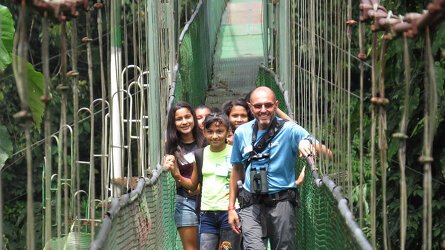
Exodus chooses their Leaders carefully. Professional, dedicated and are passionate about sharing their home countries. Read more
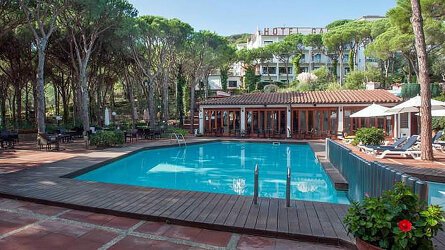
Wherever possible, Exodus chooses properties that are locally owned and that reflect the area you are visiting. Read more
Availability
A definite departure means minimum numbers have been reached for this departure to operate. Your Global Journeys Travel Advisor will check the availability of your departure date when you enquire. Additional savings may apply. We guarantee the lowest price in Australia. T&C’s apply.
Tour & cruises prices are per person. Prices shown have savings applied, are subject to availability and may be withdrawn at any time without notice. Pricing and trip details are correct at this point in time, however are subject to confirmation at the time of booking and are subject to change by Exodus. For cruise itineraries, cabin images are sourced from Exodus. These should be treated as indicative only. Cabin inclusions, upholsteries and room layout may differ to the image(s) shown depending on the ship selected and your sailing dates.
